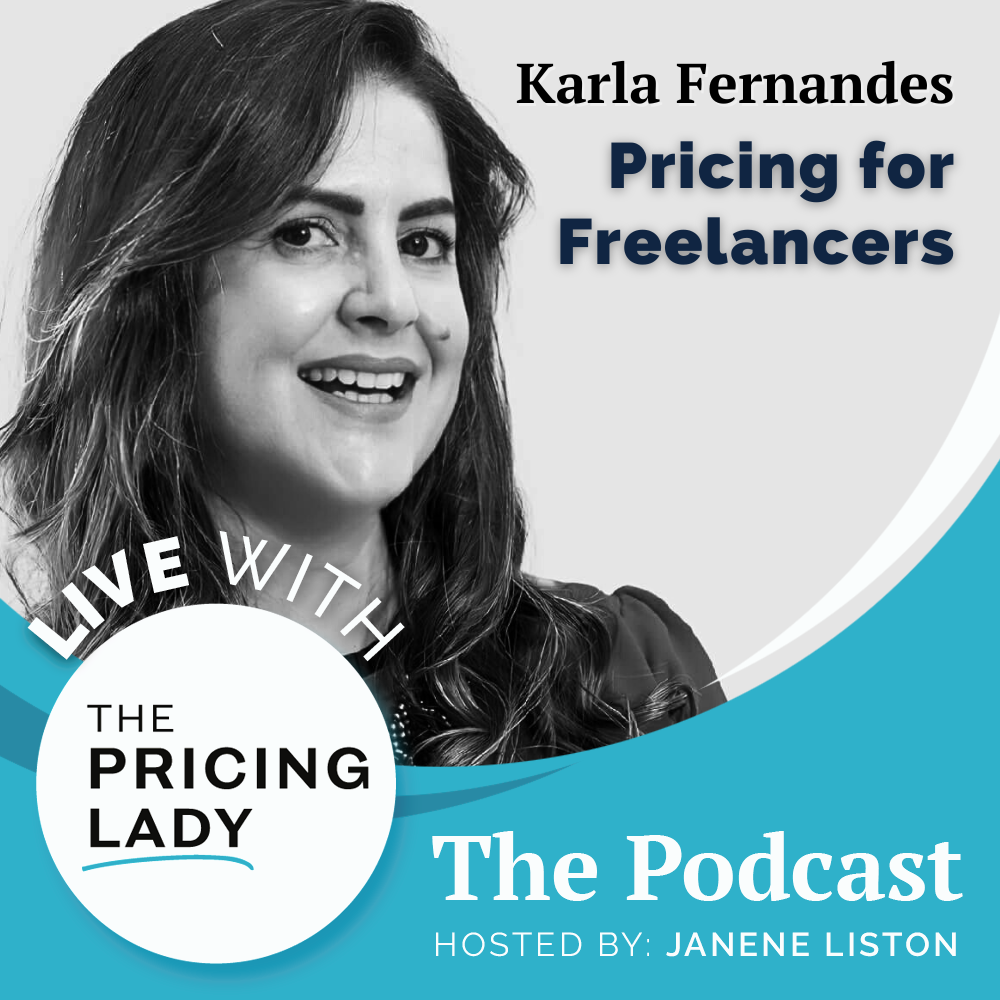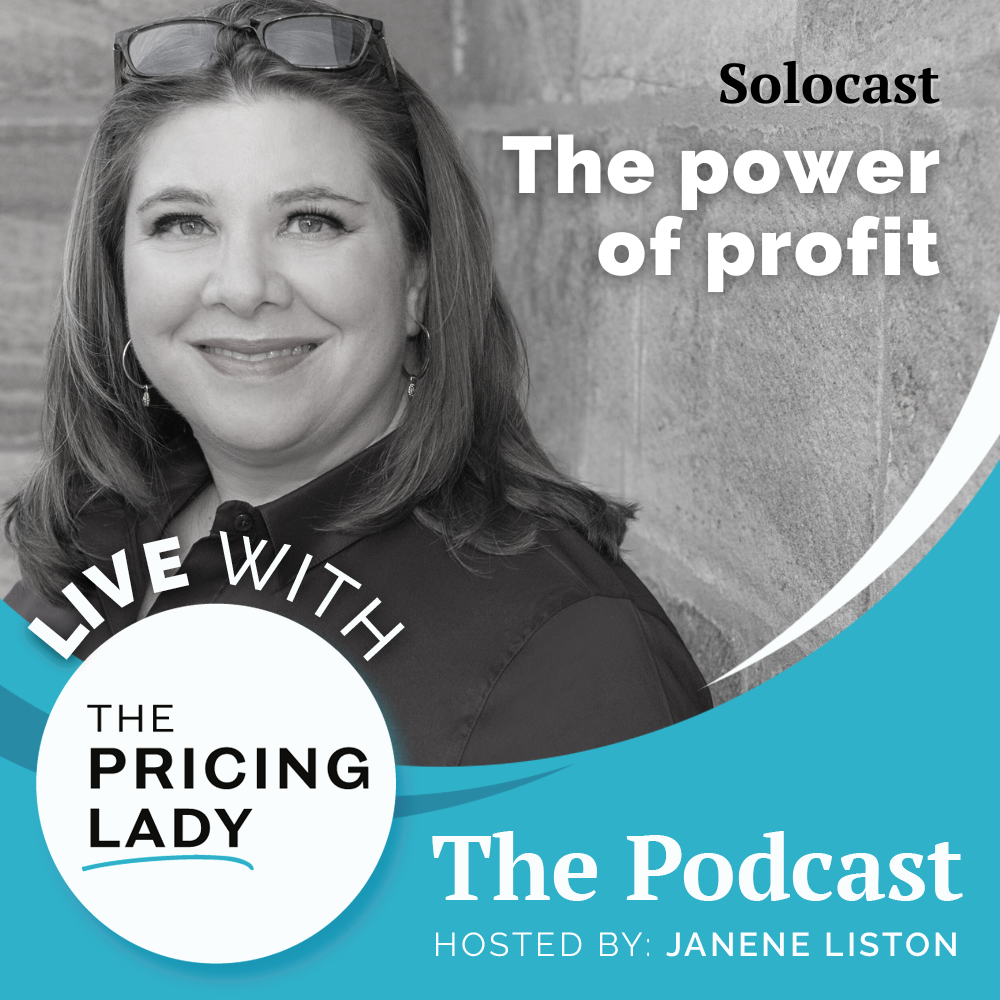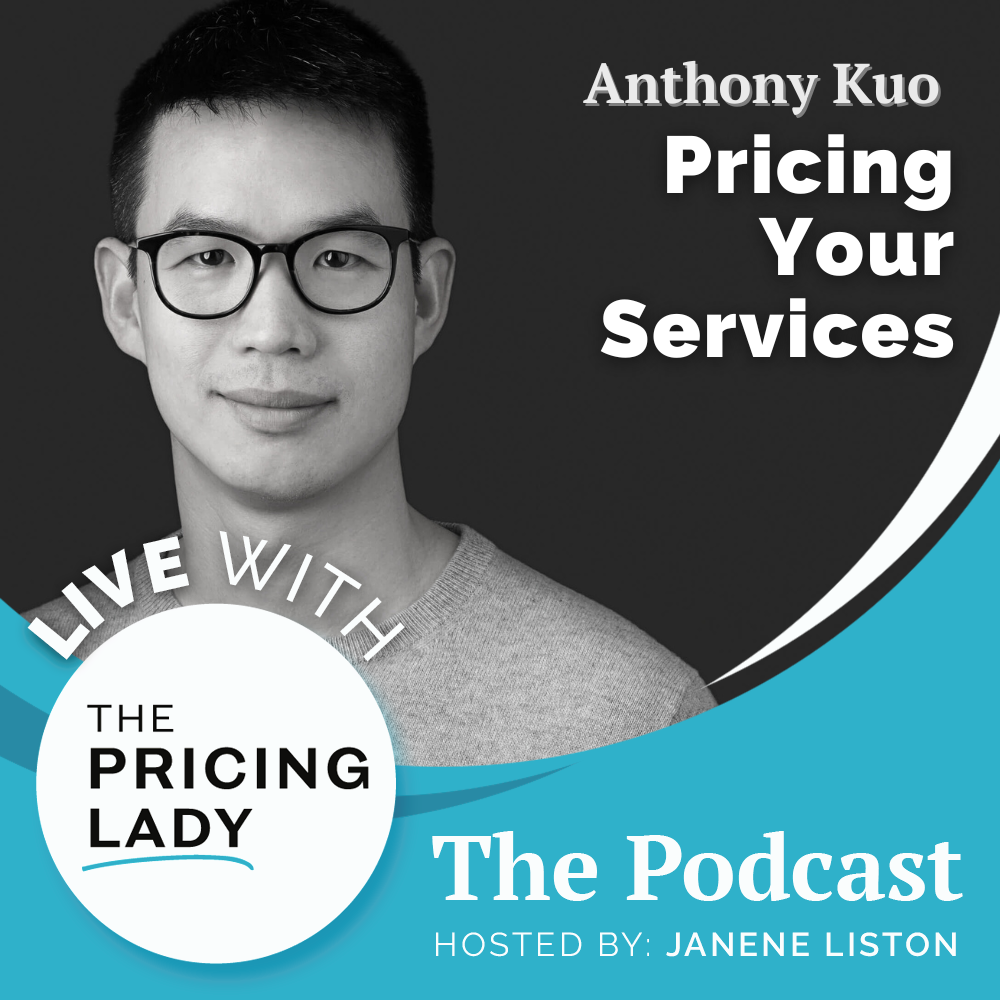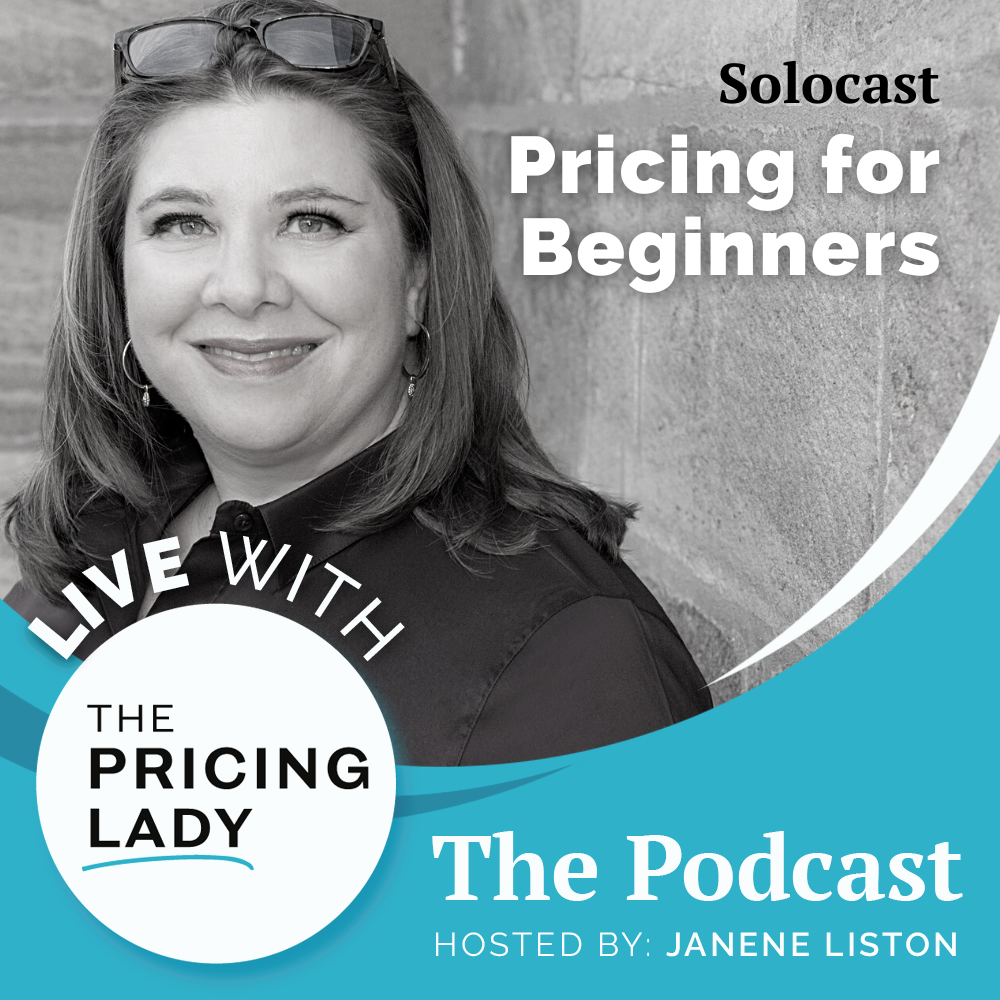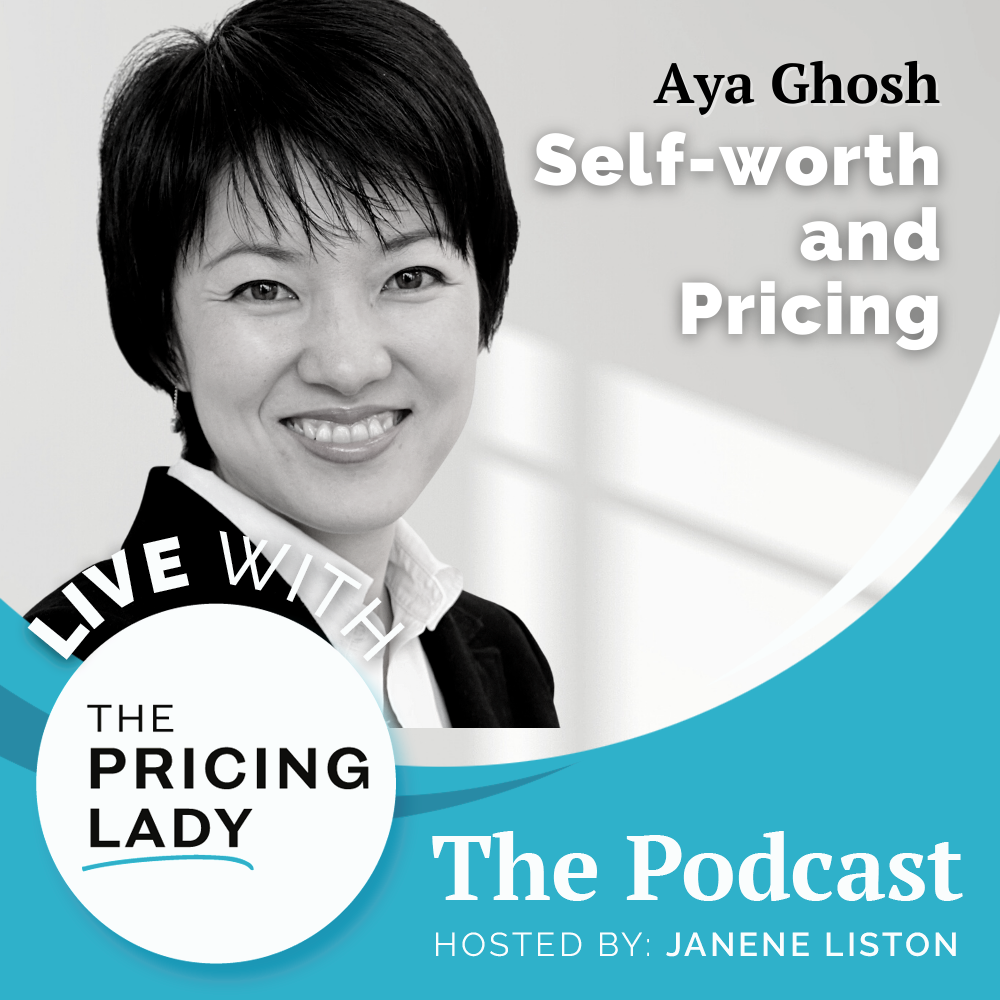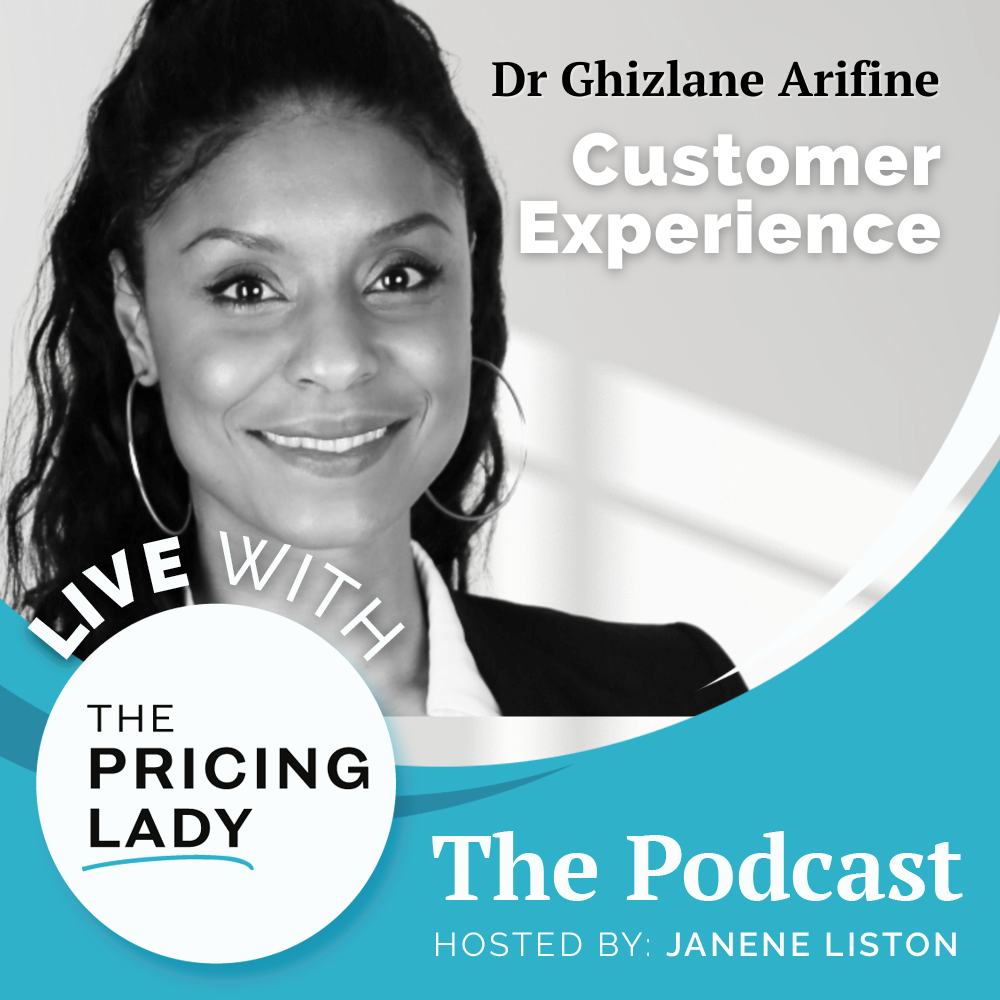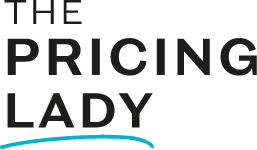When you know thy customer it’s easier to know the price. The number one mistake businesses make with their pricing is:
…not taking the time to understand the customer.
This usually comes in two forms, they are trying to target “anyone” or they are moving forward with untested assumptions about customers. This makes it very difficult to find prices that fit customers. Beyond pricing is makes developing the right offers, marketing them and selling them a bigger challenge than necessary. Typically companies end up pricing low because they feel insecure. They are new and feel that to entice customers they have to have a low price. Most of the time they’ll struggle to sell at the lower price and the business will never be profitable enough to grow.
In this episode…
In this episode solocast episode I will go into more detail on the importance and what it means you need to do. We’ll look closer at why businesses do this, what the consequences are when you aren’t clear on who you’re targeting and the #1 way to avoid making the mistake.
Let’s take a closer look at why you need to “know thy customer”.
If you prefer to watch the live stream video replay, use this link.
Highlights of this episode:
0:00 Introduction
1:35 Biggest mistake
2:55 Untested assumptions
4:59 Interview customers
11:19 Multiple stakeholders & segments
Favorite quotes from this episode:
“Think about that in the context of your brand, do you want to be a generalist or do you want to be an expert? Is your product or offer solving a general solution or a specific solution or a general solution for a specific group of people?” Janene
“If the customer doesn’t want it, it doesn’t matter what price you attached to it. You’re going to have a hard time selling” Janene
“It’s so important to start your entire pricing thought process by understanding who it is that you are targeting. The best way that I’ve found to do this is to do customer insight interviews.” Janene
“It is not a sales discussion. Too often when people are doing these interviews, they present to the customer, what they offer and then ask them, do you want it. That is a sales discussion, not a customer insight interview. A customer insight interview is really about understanding their thought process.* Janene
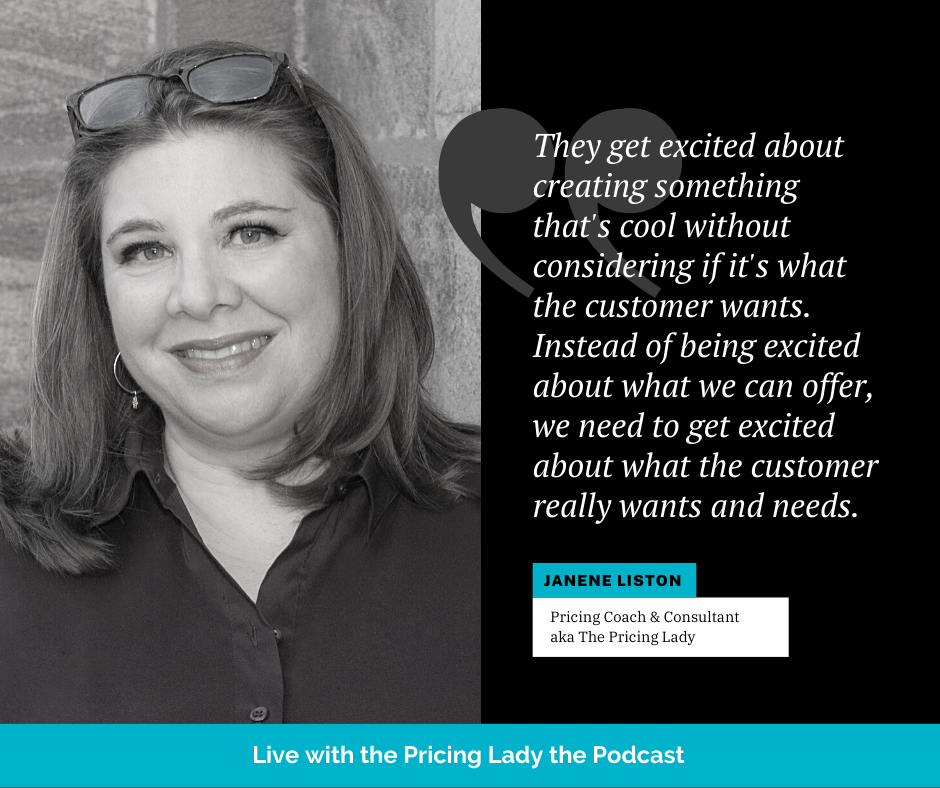
“Ultimately when somebody is looking to purchase something, there’s only one question that they’re trying to answer. That’s what’s in it for me.” Janene
Reach Out, Connect and Book a Call with Janene
Linkedin | YouTube | Facebook | Email List
Get started improving your business. Sometimes it’s difficult to know where to begin. I suggest you Download the the self assessment Pricing Scorecard. Get a view of what’s working and what’s not working when it comes to pricing in your business. Figure out where to start making improvements.
Get in touch with Janene. If you’ve got a question that needs answering, a challenge you’re facing or you have suggestions for future topics or guests, let me know. Contact Janene.
Listen up! Don’t miss out. There’s a lot going on and you’ll want to be in the know. Follow my YouTube channel (rate it too please) so you don’t miss an episode of Live with the Pricing Lady or join my Email List.
Transform your business and life. My mission is to help you build a sustainably profitable business. One where you can confidently charge for the value you deliver. Curious about my coaching and consulting offers, check them out. Let’s see how we can work together. Book a complimentary Call today!
Episode Transcript
(Note: this transcript has been edited)
Why is customer so important in the process of setting, getting and managing your prices? My experience has been that pricing is rooted in a deep understanding of the customer. As I work with businesses, quite often I find that before we’re even started, we have to do some work around getting clear on who it is we’re targeting and what they seek.
Are you positioning yourself as a generalist?
One of the biggest mistakes that people make in this area is by generalizing themselves. They have the feeling, the belief that anyone can buy, what they offer and that may very well be true. However, when you approach the market with that mindset, what you do is you’re offering yourself up as a generalist. A generalist, of course will not be in a position to be able to command prices at certain levels. It’s better if you can position yourself in a niche or as an expert, as opposed to a generalist.
If you have, or are finding yourself, having thoughts that, oh, anyone can buy that I offer… on the one hand, that’s probably true. But on the other hand, when it comes to your pricing and your marketing and your selling tactics is going to make it that’s much more difficult. So, first of all, think about that in the context of your brand, do you want to be a generalist or do you want to be an expert?
Is your product or offer solving a general solution or a specific solution or a general solution for a specific group of people? Right. So you have to think about this because this will help you then understand better what customers might be willing to pay.
Untested assumptions & engineers gone wild.
Now another mistake that people make is maybe they’re clear or fairly clear about who their target customer is. However, they’ve made assumptions about what that group wants, what they value, how they make purchasing decisions, and they haven’t necessarily tested those assumptions. Now in the past year, I’ve seen it. Quite a few businesses who are years into the process of starting their businesses and yet have not interviewed a customer yet.
You have to actually have not a sales conversation, but another type of conversation, I call it a customer insight interview with your customers and get into their psyche. Why is that so important? Because the other thing, and the last thing that I’ve seen is that people develop products and services, that aren’t really what the customer wants. And of course, if the customer doesn’t want it, it doesn’t matter what price you attached to it. You’re going to have a hard time selling. Now I call this because I come from an engineering background, I call this engineers gone wild, and that happens from time to time.
They get really excited about designing something that’s cool and innovative without really considering it. Is it what the customer wants and or needs? You find this in small businesses as well. We all get very excited about what we can offer. But instead of being excited about what we can offer, we need to get excited about what the customer really wants and needs.
The best way to clear things up.
What is the problem you’re trying to help them solve? What is their desired transformation they’re looking for? These are the kinds of questions that you want to know. This is why it’s so important to start your entire pricing thought process by understanding who it is that you are targeting.
The best way that I’ve found to do this is to do customer insight interviews. And the earlier you start doing them, the more information that you’re going to have. About what they’re really looking to achieve, how they’d like to achieve it. And of course, what you can then charge to help them get there or do that.
What do these customer insight interviews really mean to you? First of all it is not a sales discussion. Too often when people are doing these interviews, they present to the customer, what they offer and then ask them, do you want it. That is a sales discussion, not a customer insight interview. Customer insight interview is really about understanding their thought process.
Janene’s Lemonade Stand an example
Let’s use a very simple example and we’ll call it Janene’s lemonade stand. If I wanted to start a lemonade stand in my neighborhood, then my neighbors and passers-by would be a target audience. Now I could target a specific group within those people, or I can target them in general.
But remember if I’m doing it in general, then I’m positioning myself as a generalist as opposed to an expert and specialist. And that’s going to mean a more general price as well. Let’s think about this for a moment. How would I go about finding out what they want? Well, I would sit down and talk to them and ask them some questions.
What is your day like? Are you walking around the neighborhood? Is a Saturday different or a Sunday different from a Monday or Tuesday? Who are you with when you do that? What kinds of things are you doing? Do you bring water or some sort of beverage with you when you walk around the neighborhood?
Is there somewhere here in the neighborhood where that you can buy a beverage if you want, you’re really starting to get, you want to understand what’s behind how they make a decision. And then you might ask questions like, well, if you wanted a beverage, where would you go?
Who would you ask? How would you find out where to get it? Now, these may seem like overly simplistic the questions, but the crux or the point of what you’re trying to do is to get them first, to think about what they would do or how they do things. Explain that to you so that you can understand their behavior.
Listen, really listen
As you go through this conversation with customers and dig into what they really want, then you need to sit back and listen. This is a really important point of doing customer interviews too often we feel like we have to do the talking.
Reality is that what we need to do mostly is listening. We ask a few pointed questions. We ask follow-up questions after they’ve explained some things, but mostly what we’re doing is we’re listening to what they’re telling us. When we don’t do that, we end up with products that customers don’t really want.
Then when we’re trying to price them and nobody wants to buy it, it feels like we have to have a really low price just to get a single person to be interested in purchasing it. But the price in the end, isn’t the problem. It’s what we’re offering.
What’s the ultimate question?
Ultimately when somebody is looking to purchase something, there’s only one question that they’re trying to answer.
That’s what’s in it for me. As a customer every day, when you’re considering all the purchases you could be making in your mind, whether consciously or unconsciously, you are asking yourself, what’s in it for me to buy this? Go to the grocery store, what’s in it for me? If I buy the gala apple versus the golden delicious apple, well, the flavor is different or maybe the pricing is different.
There are different aspects to those two different kinds of apples and your brain is making some sort of calculations and assumptions about what it is that you’re going to get out of it. Just like, if you have a car and you go to the gas station, if you don’t buy the gas, what do you get out of it?
Maybe an empty tank in a place that you don’t want to have an empty tank. If you buy the different types of gas, they have different value, for real or perceived, versus the other ones like Ken, you’re asking yourself, what’s in it for me. By doing customer insight interviews, you start to form an idea of what customers are looking for or how they perceive the answer to the question what’s in it for me.
That will help you make sure that you have the right products and offers in place for your customers, as well as help you communicate with them. The right way.
Figure out the emotional connection point
Now, one other thing that I’ve said quite often is that pricing is an emotional experience. When somebody chooses to buy something, there’s some logic going on in there, but the big influence in this whole thing is their emotion.
If you can connect with them on an emotional level about what it is that they’re going to get from you when they buy this. Then you’re going to have a stronger connection or that customer is going to have a stronger connection with what you’re offering. That’s why so much of advertisement is based on emotions and psychology.
Correct? Right. This is what you want to start to understand. It’ll help you offer the right things, set the right prices and develop the right communication.
Different customer stakeholders
What I want to talk about next is the following. When you’re doing customer insight interviews in some businesses, you’re going to have more than one target customer.
Let me give you an example. If I’m doing coaching leadership work with large corporations, then I may have two or three different stakeholders for the same offer. How does that work? Quite often, HR will call, they’ve heard or gotten recommendations about the services and leadership development that I offer.
So they contact me to find out more about me and what I offer. My first stakeholder or target customer is the HR person. Now that HR person is actually calling me on behalf of the manager who wants to bring me in and have me work with his or her team. Right? There’s your second stakeholder is this manager of a department who has asked this HR person to contact me, to find out what I have offer.
That’s number two, number three might actually be the purchasing agent within the company who has to review the contract before it’s finalized. Now all three of these people, are stakeholders groups, but they have very different answers to the question “What’s in it for me?”
Now, do you have three different prices for them? No, not necessarily. What you do have is you do have value communication around these three people, so that you’re speaking about what you offer and what it delivers in a way with a that’s a lot. What they want and what they’re looking to get out of it.
That is what you want to be able to do.
Different customer segments
The next thing I want to mention is that sometimes within a target group, you can have different segments within there. Let’s go back to my lemonade stand example, where we talked about my neighbors.
Now, some of my neighbors might be children. They may or may not have a little bit of money to spend on lemonade. Then you have the adults and parents. Maybe you have a group within those adults who love to throw a big parties. And they come to me and they ask, will you provide jugs of lemonade for my party. What would you charge for that?
That’s going to be a completely different segment. And in this case, it almost results in a different offer as well. Again, all of this is going back to how well do you know your customer? Pricing will always circle back to this because the answer to what do I charge and how do I get people to pay that is always going to be connected to what the customer perceives as the value of what you’re offering.
Without that you will have a hard time convincing them or getting them to connect to what it is you’re offering, the results you can bring and therefore what they should be paying for the product or service that you’re offering.
That was what I wanted to share with you today. Thank you so much for joining me.

